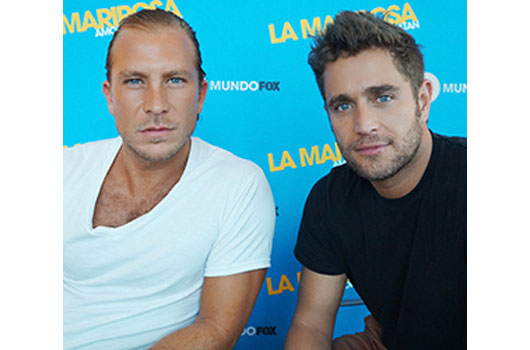
We might not associate soap operas with cutting edge television—leave that to NYPD Blue and The Walking Dead. But when you think about it, soap operas have been a leading force in tackling difficult social problems and helping the American public come to terms with the beliefs that often divide us. Soaps were among the first programs to tackle racial integration, gay rights, women in the workplace, divorce, abortion, addiction, you name it.
Read Related: Are Telenovelas Really the Wave of the Future?
Because of they air during the day, soap operas have the potential to reach highly influential segments of the population—American moms, grandmothers, and teens. According to Nikki Boyer, host of Yahoo’s Daytime in No Time, “…by showing something that was once taboo and making it more mainstream, it (soaps) does get people talking about important issues, and that’s a good thing. Talking about eating disorders and your gay nephew is a good thing.”
Ultimately, soap operas have changed America for the better—and here are 10 great examples of pivotal storylines, characters or moments that helped us grow as a nation.
1. All My Children
As soon as it premiered in 1970, All My Children didn’t shy away from tackling social issues of the day. Two characters were at odds over their beliefs about the Vietnam War and one became an active anti-war protester. Erica Kane, so famously portrayed by fan favorite Susan Lucci, was the daughter of a single mom. Erica was also the first character on American TV to be depicted having an abortion—it happened in 1973; months after the landmark Roe vs. Wade Supreme Court decision.
2. The Young and the Restless
While other daytime dramas have withered and died, The Young and the Restless is still going strong. The show was one of the first to depict highly sexualized characters and dialog, but also addressed bulimia, addiction and cancer. Jennifer Brooks was the first soap opera character to undergo a mastectomy, and her storyline helped raise awareness about breast cancer prevention.Y&R even gave us TV’s earliest lesbian relationship—the brief 1977 fling between Katherine Chancellor and Joann Curtis.
3. Day of Our Lives
DOOL, as it’s known to devoted fans, had a reputation in the 70s for tackling controversial storylines no other soap would touch. These included amnesia, exorcism, rape and lying about paternity. But it took Days until 2011 to introduce its first gay character, Sonny. Sonny’s arrival on the scene prompted character Will Horton to question his own sexuality, and he eventually came out of the closet and started a relationship with Sonny.
4. Ryan’s Hope
This soap took the interesting premise of centering around a working-class Irish Catholic family in the Washington Heights neighborhood of New York City. Producers wanted Ryan’s Hope to depict a real New York community and for a while, the show succeeded. Storylines pitted conservative Catholic parents against their modern children, and dealt with premarital sex, divorce, living together out of wedlock, and illegitimate children. But Ryan’s Hope lost its way by the late 70s, and was cancelled in 1989.

5. General Hospital
The holy grail of all soaps, General Hospital has tackled virtually every social issue imaginable. Most notably, it addresses HIV/AIDS awareness in the 1990s, using the storyline of a young teen who dies of AIDS and his girlfriend who is left to cope with her HIV diagnosis. GH even held an AIDS fundraiser which was actually a real fundraiser. Appropriately, perhaps, General Hospital’s most high-profile guest star was AIDS champion Elizabeth Taylor, who appeared at Luke and Laura’s iconic 1981 wedding.
6. As The World Turns
ATWT made history in 1988 when it introduced daytime’s first gay male character, Hank Elliot. It also televised daytime’s first gay male kiss, between characters Luke and Noah in 1988. It took a while, but in another daytime first in 2009, Luke and Noah finally consummated their longtime love affair. The landmark show ran from 1956 to 2010, making it the second longest-running daytime drama.
7. Guiding Light
Television’s longest-running drama–daytime or otherwise—aired an incredible 57 years—and decades before that on radio! At its strongest, Guiding Light was in step with the times; at the height of the Civil Rights Movement, it was the first soap to feature an ensemble of black actors in recurring roles, and helped launch the careers of such notables as Billy Dee WIlliams, Ruby Dee, James Earl Jones and Cicely Tyson. In the 1990s, GL initiated an even stronger black presence on the show, including the casting of Nia Long.
8. Another World
Custody battles, class warfare, addiction, adultery, parental estrangement…none of these subjects was taboo for Another World, which ran from 1964-1999. In fact, in its first year, AW aired a storyline involving a teenager having an illegal abortion and being left sterile as a result. Daring stuff nearly a decade before Roe vs. Wade.
9. Santa Barbara
Short-lived by soap standards, Santa Barbara aired just 9 years, from 1984 to 1993. But it gave us one of daytime’s most beloved interracial couples, Eden and Cruz. Unlike many white/black and white/Hispanic pairings in soaps, which have often portrayed interracial romance as doomed from the start, this is a couple whose love actually endured through thick and thin.
10. One Life to Live
OLTL was the first soap to introduce a lead African American character, Carla Gray, in 1968. The storyline sees Carla hiding her racial identity and posing as an Italian American. Six months in, viewers were shocked to learn that Ellen Holly, the actress portraying Carla was actually black. Several Southern states boycotted the show, but that didn’t stop producers from involving Carla in a several interracial relationships over her decades on the program.













Leave a Reply
Want to join the discussion?Feel free to contribute!